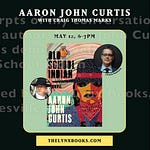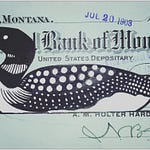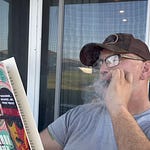Oki, Nikso’kowaiks.
Ledger Art today has evolved into something modern, historical, and uniquely indigenous. Keeping in the spirit of its origins, today’s artists focus on contemporary themes as well as traditional ones. What was once considered a men’s art form has now grown beyond colonized gender roles and stereotypes (something the Piikani were never good at conforming to anyway), and while artists all bring their own unique style and flavor to their pieces, all of them have a story to tell.
I have told you the story of Plains Indian Ledger Art. Now it is time to take a look at some of the work and meet some of the artists who inspire me. Where possible, I have included links to the websites of each of these amazing artists. Please visit their sites and support their work.
A few years ago, I had the opportunity to exhibit my ledgers with renowned Caddo artist Dolores Purdy. Dolores became fascinated by Ledger art during the 1990s while looking into her family history. She made the Caddo connection to Ft. Marion in St. Augustine, and she was hooked. Her work is often a subtle contrast to most contemporary ledger art. Her female perspective gives her work a different flavor. While it is still steeped in indigenous history, it is also influenced by the works of nonnative artists such as Peter Max. Her ledgers offer a lightness often missing in the work of her contemporaries.
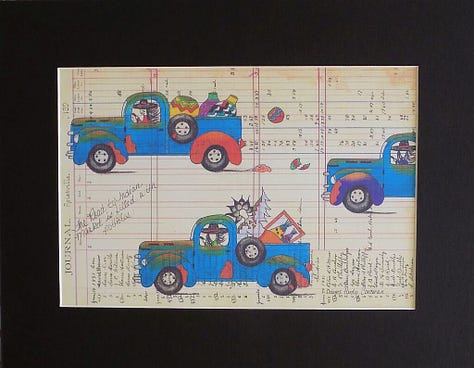
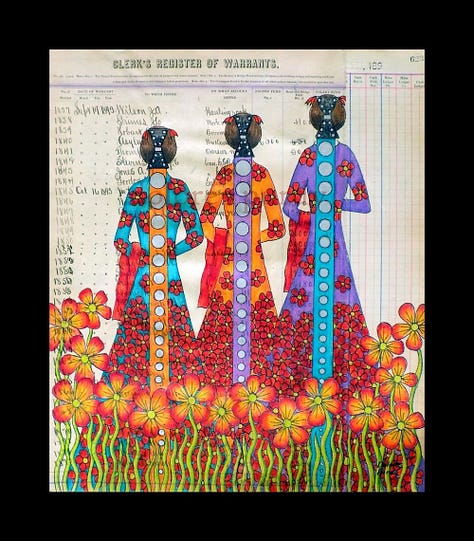
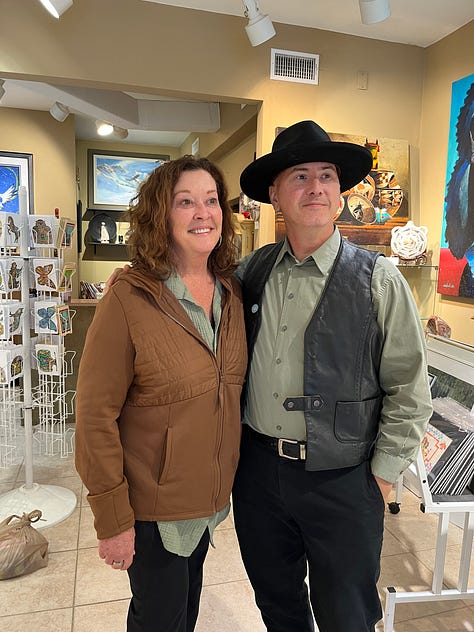
Perhaps the most famous and prolific Ledger Artist of his generation, Piikani artist Terrance Guardipee (Last Gun) has revitalized the art form and taken it far beyond simple pictures on paper. His style tells the stories of legend, blending traditional methods and modern mediums to create enormous collages. Terrance introduced me to the art form and has been a longtime friend and voice of encouragement as I find my own place among the Piikani artists.
Chris Pappan represents the Osage, Kaw, Cheyenne River Lakota Sioux nations. His work “reflects the dominant culture’s distorted perceptions of Native peoples while proclaiming that ‘we are still here!’” His pieces contain powerful, surrealistic imagery. Pappan commands a tremendous understanding of both perspective and light. Based out of Chicago, Pappan considers himself “Indian Lowbrow,” as his work blends tradition, pop, and surrealism.
It isn't possible to discuss indigenous art without including Good Day Woman. Lauren Good Day is an internationally renowned artist whose work has been seen in the National Museum of American Indian, Washington, DC, and New York City, the Heard Museum, and many other prestigious locations. In addition to her art, Good Day is a respected and sought-after fashion designer. Her indigenous clothing designs have been featured in Vogue and Elle magazines, and rocked by celebrities such as Golden Globe winner and Academy Award nominee Lily Gladstone. Residing in her traditional homelands, Lauren is active in language and cultural revitalization projects among her people.
Perhaps the most contemporary style of today's Ledger Artists, Terran Last Gun, is taking Ledger Art to entirely different places visually than almost anyone else in the game today. Still holding to his Piikani heritage, his work is unlike anything else I have encountered. Last Gun states, “My work often employs geometric aesthetics and contributes to an ancient yet continuous Piikani narrative.” His work is a bridge between the past and the future in brilliant and captivating ways.
I first “met” ledger artist, language teacher, muralist, Marine Corps Veteran, and filmmaker, Jesse Desrosier, on Instagram. He had expressed interest in one of my paintings, and what started as a simple business transaction ended with an unofficial addition to my family. Jesse’s work includes both the traditional storytelling of the Piikani as well as more contemporary realism.
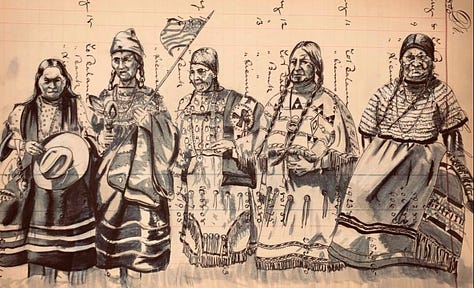
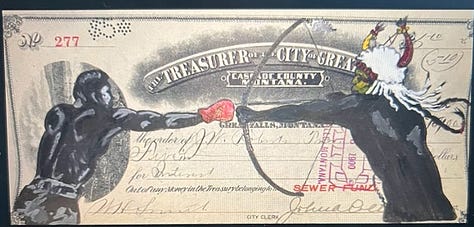
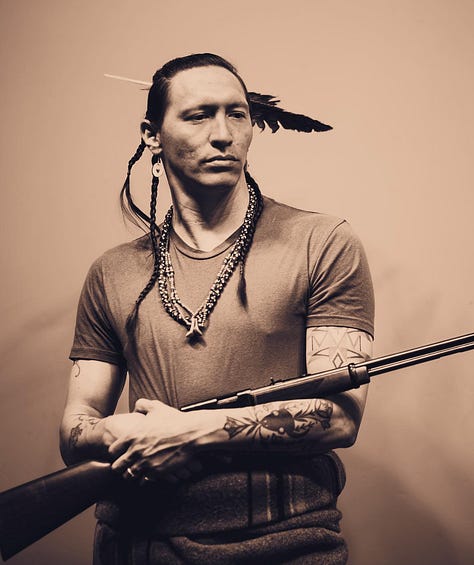
Jesse has helped me tremendously to understand the deeper meaning of the art, from a place only one with an intimate understanding and knowledge of the Culture can.
MICHAEL FAST BUFFALO HORSE
Michael Fast Buffalo Horse is a young artist I corresponded with as I attempted to put together a Blackfeet Ledger Art exhibition here in Florida. Terrance Guardipee had provided introductions to a number of talented Native Artists, and Michael’s really made me smile. His work was full of rez humor, which is often a shield from the often harsh realities of reservation life. His piece entitled “Gas Money” is a prime example.
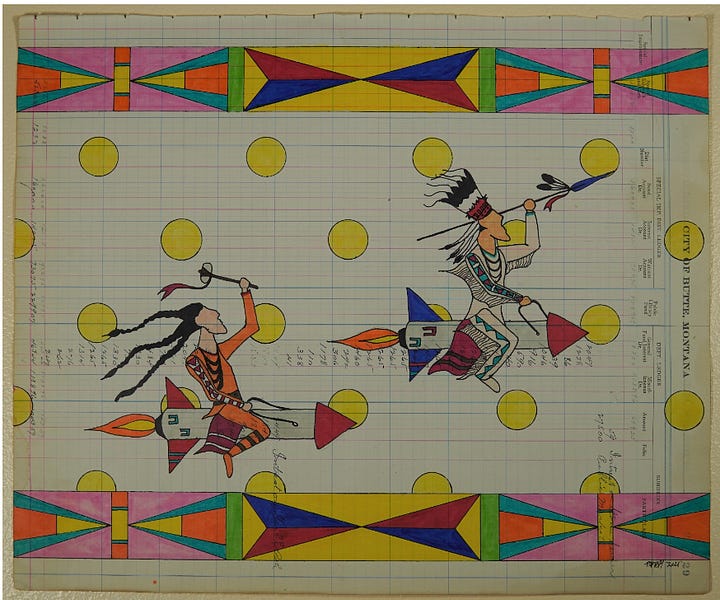
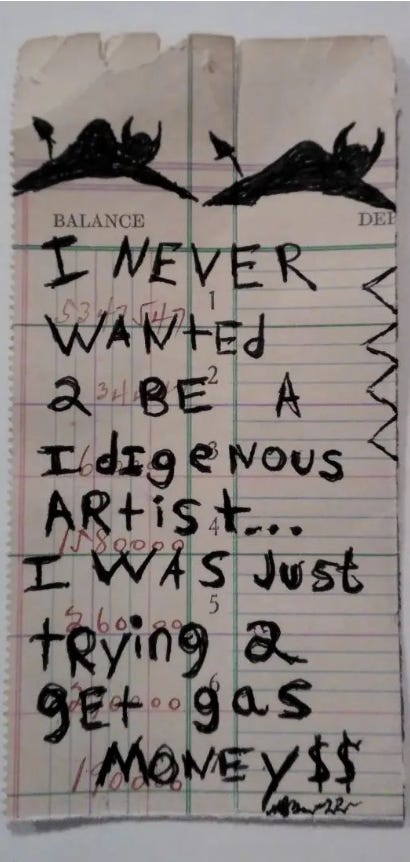
He shared with me a piece he did depicting two warriors, complete with standup war bonnets and the three braids of a Piikani brave riding rockets through a sea of stars. The piece entitled Blackfeet Raiders of the Northwest Galaxy was inspired by his love of science fiction.
He told me, “I feel Blackfeet art tends to focus on the past, and although remembering the past is important, I think it is also important to imagine the future.”
“I am also interested in the way that white anthropologists and scholars have shaped the way we think about our past and the way we view ourselves. Ledger art appeals to me because it is an opportunity for us to move away from the image that white academics have created for us and tell our own stories.”
Finally, I would like to share with you how Ledger Art has inspired me.
Regardless of how the U.S. Government may feel about it, I am the grandchild of Pipewoman (Aahkóinnimaakii). I am the grandchild of Rabbit Woman (Ááattsistaakii), who was the wife of ig Spring (Sohkoyiksísskomm). I may be a “Florida Man,” but my spirit is Piikani, and part of me belongs there, in the Backbone of the World. Through my study of Ledger Art, I have learned the stories of my ancestors and can continue to share them with the world.
Art has introduced me to some amazing and inspiring people. My friend, actor/Activist Eugene Brave Rock, has been the subject of a number of my pieces. I have had the opportunity to collaborate with Miss Universe Ashley Callingbull on a charity project, as well as professional athletes, musicians, and other artists. But none of that compares to the connection to my family and its culture. I have learned stories of Big Spring, who was wounded while stealing horses. I have learned of Rabbit Woman’s mean streak and the six-shooter hidden in her blanket. I learned of Dog Child (Imitáápookáá), who some sources shown in RCMP uniform, brandishing a samurai sword. I have learned many things and have had many doors opened.
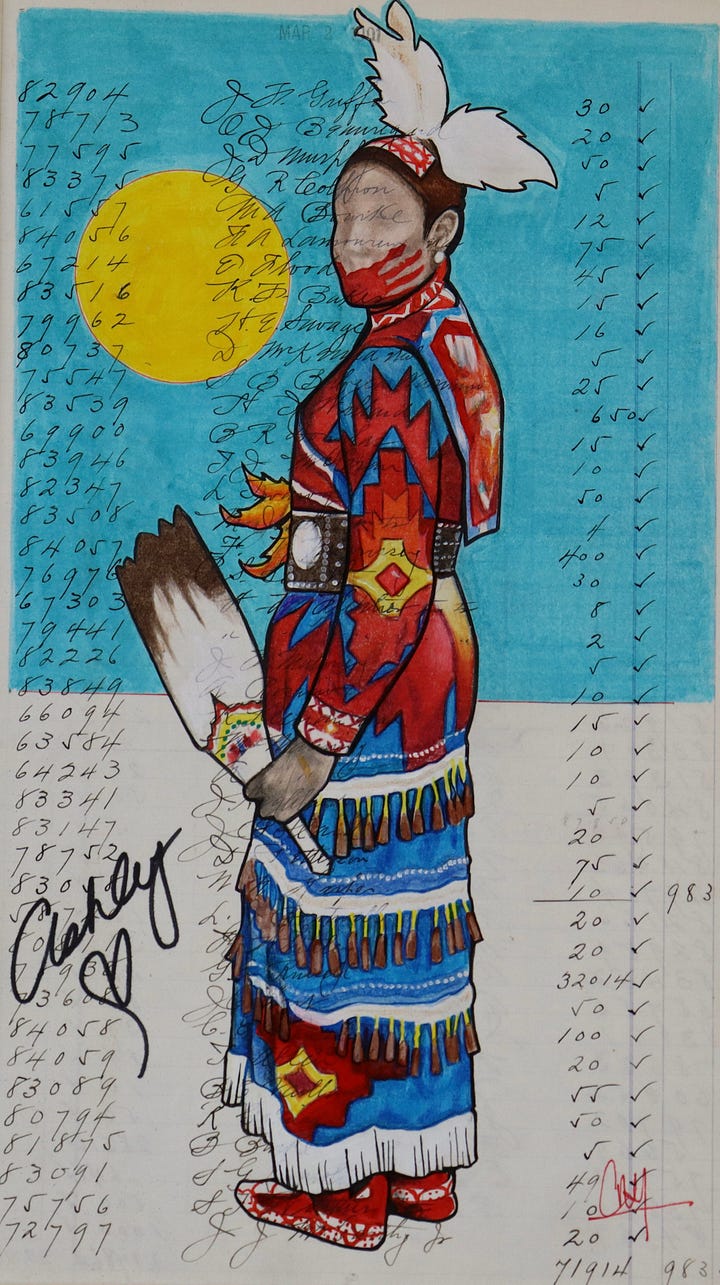
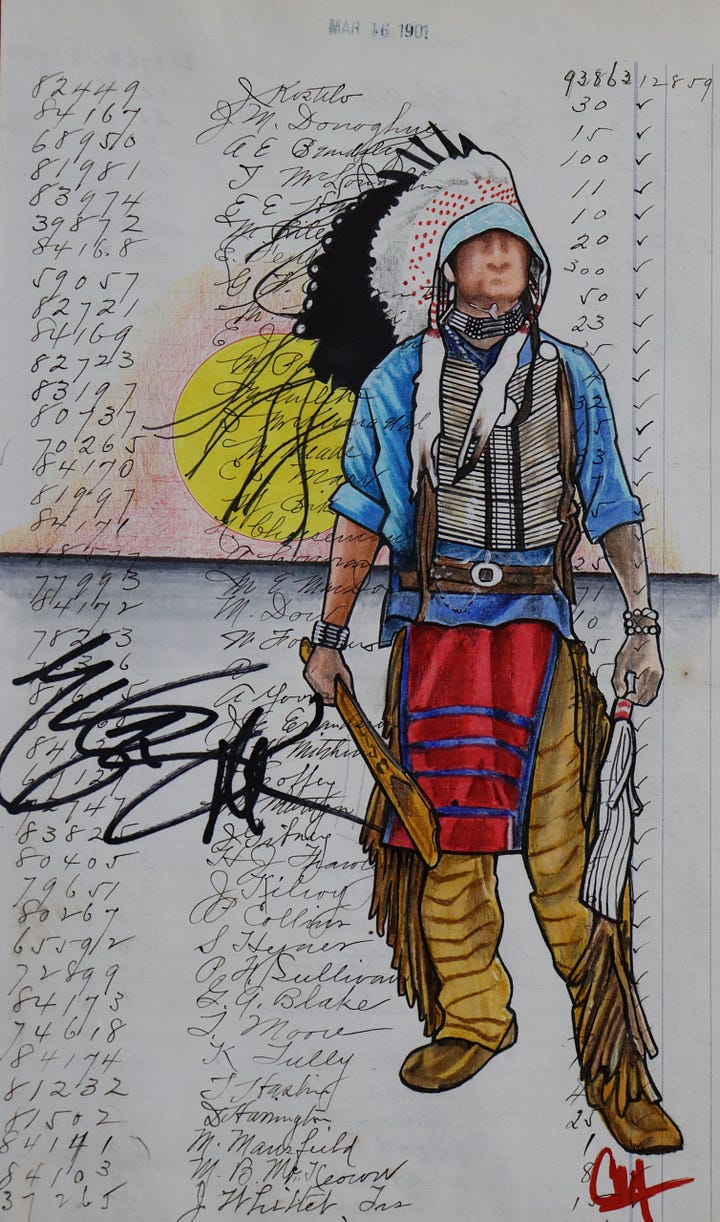

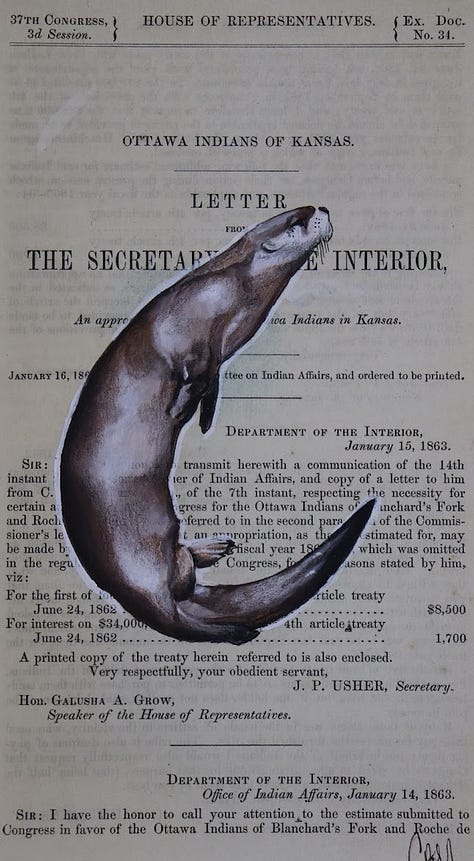
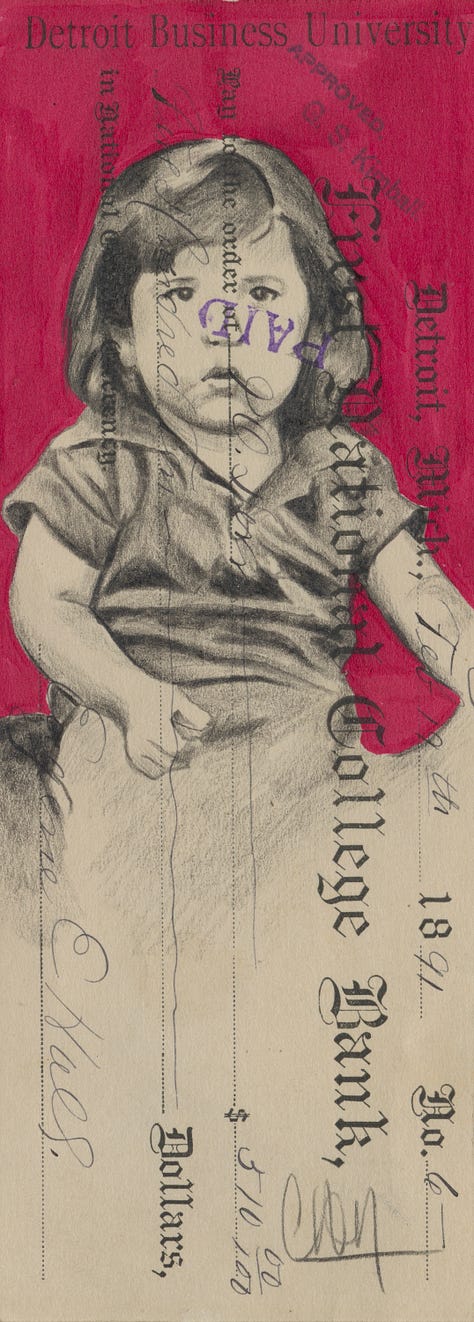
I hope you have enjoyed this series as much as I have enjoyed writing it.
Be safe.
Be well.
It’s a beautiful world.
Craig







